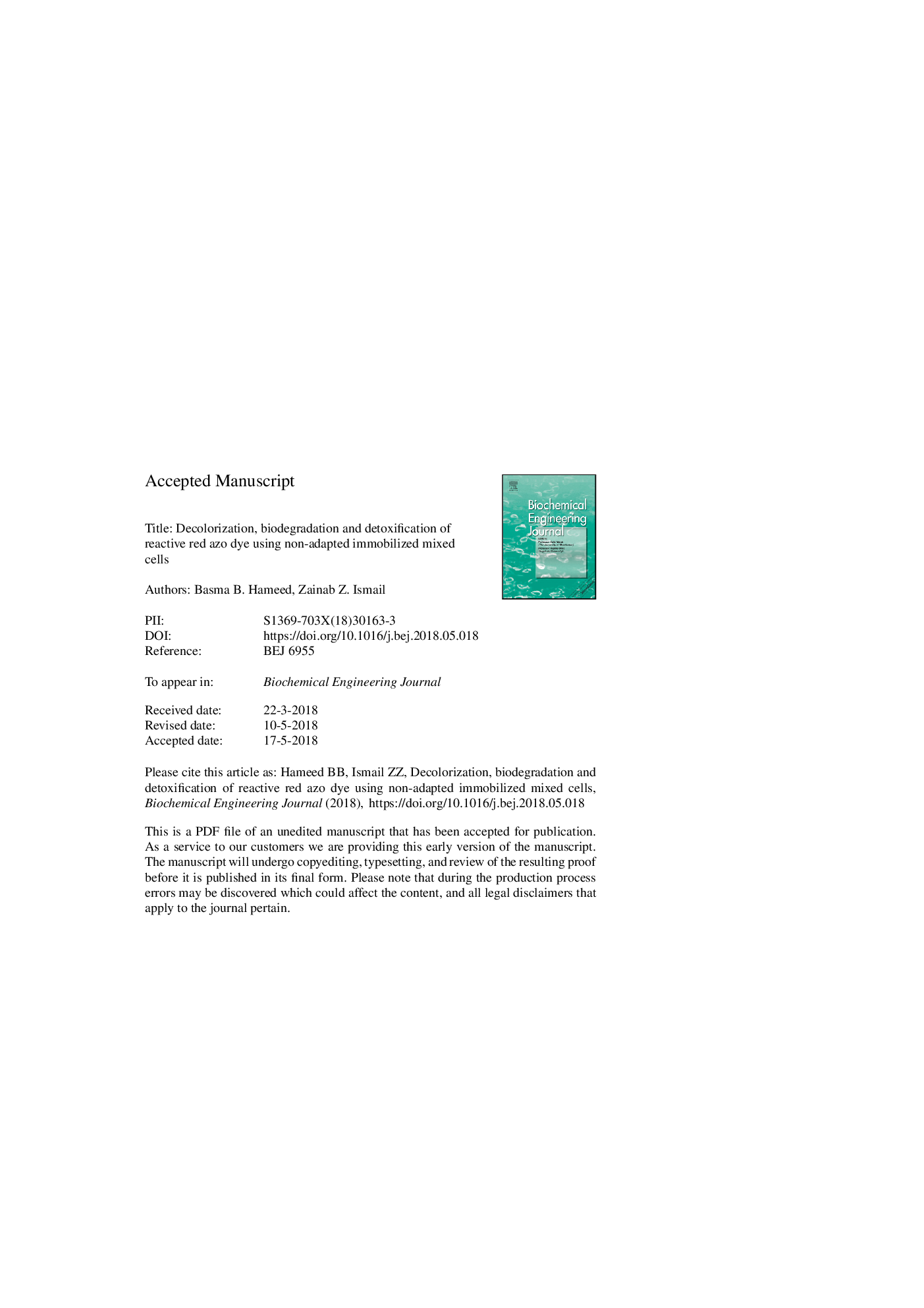| Article ID | Journal | Published Year | Pages | File Type |
|---|---|---|---|---|
| 6483889 | Biochemical Engineering Journal | 2018 | 31 Pages |
Abstract
Azo dyes are refractory and recalcitrant contaminants that pose a significant impact on the environment upon releasing to the natural resources. This study focused on the decolorization and biodegradation of water soluble azo dye reactive red (RR2) in an integrated batch mode sequential anaerobic-aerobic processes. Activated sludge collected from a local sewage treatment plant was used as the source of non-adapted free and immobilized mixed cells for the biodegradation of RR2. Starch as a non-conventional bio-carrier and the conventional alginate were alternatively used as bio-carriers to immobilize the mixed cells. The immobilized mixed cells were found to completely decolorize 10â¯mg/L of dye RR2 within 30â¯h under anaerobic incubation conditions. The experimental results revealed that the 96%, 93%, and 82% maximum COD removals were observed with samples containing RR2 at initial concentration of 10, 20, and 40â¯mg/L, respectively using non-adapted immobilized mixed cells. Comparable decolorization results were observed with both types of bio-carriers indicating that the effect of bio-carrier type was negligible. Additionally, UV-vis spectra demonstrated that the azo bond was cleaved biologically in the anaerobic phase. The acute and phytotoxicity evaluation of degraded metabolites suggests that the non-adapted immobilized mixed bacterial cells successfully favored the detoxification of dye RR2.
Related Topics
Physical Sciences and Engineering
Chemical Engineering
Bioengineering
Authors
Basma B. Hameed, Zainab Z. Ismail,
